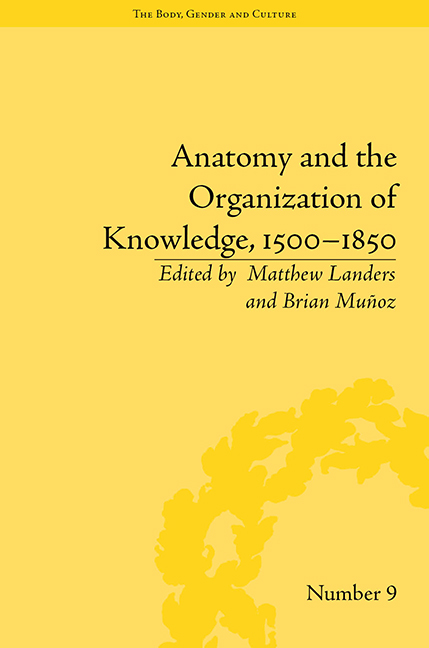Book contents
- Frontmatter
- CONTENTS
- List of Contributors
- List of Figures
- Introduction
- Part I The Body as a Map
- 1 Early Modern Dissection as a Physical Model of Organization
- 2 ‘Who Will Not Force a Mad Man to be Let Blood?’: Circulation and Trade in the Early Eighteenth Century
- 3 Earth's Intelligent Body: Subterranean Systems and the Circulation of Knowledge, or, The Radius Subtending Circumnavigation
- 4 ‘After an Unwonted Manner’: Anatomy and Poetical Organization in Early Modern England
- 5 Subtle Bodies: The Limits of Categories in Girolamo Cardano's De Subtilitate
- Part II The Collective Body
- Part III Bodies Visualized
- Notes
- Index
4 - ‘After an Unwonted Manner’: Anatomy and Poetical Organization in Early Modern England
from Part I - The Body as a Map
- Frontmatter
- CONTENTS
- List of Contributors
- List of Figures
- Introduction
- Part I The Body as a Map
- 1 Early Modern Dissection as a Physical Model of Organization
- 2 ‘Who Will Not Force a Mad Man to be Let Blood?’: Circulation and Trade in the Early Eighteenth Century
- 3 Earth's Intelligent Body: Subterranean Systems and the Circulation of Knowledge, or, The Radius Subtending Circumnavigation
- 4 ‘After an Unwonted Manner’: Anatomy and Poetical Organization in Early Modern England
- 5 Subtle Bodies: The Limits of Categories in Girolamo Cardano's De Subtilitate
- Part II The Collective Body
- Part III Bodies Visualized
- Notes
- Index
Summary
Anatomy as a Textual Genre
Originally quoted in its Latin form (anathomia), the term ‘anatomy’ made its first appearance in English medical language in the first half of the sixteenth century, when the rediscovery of the anatomical knowledge of the ancients started to go hand-in-hand with active experimentation. In sixteenth-century England the term ‘anatomy’ denoted primarily a branch of natural philosophy. This is suggested by the printer and bookseller Robert Copland, who combines anatomy with surgery stating, ‘the scyence of the Nathomy is needful and necessarye to the Cyrurgyen’. In many cases the term ‘anatomy’ also denoted the kind of medical knowledge that could be obtained through anatomical dissections. This emerges from the words of the satirist Stephen Gosson, who uses the term to designate the arrangement of the parts of the body that can be shown by anatomy (‘The anatomy of man is set out by experience’). The word ‘anatomy’ also indicated proper anatomical texts: i.e. dissection manuals or treatises dealing with animal or human anatomy. Such ‘anatomies’ were called ‘printed’, ‘paper’ or ‘fugitive’ anatomies, depending on their length and format.
When the term appeared as ‘natomy’, ‘notomy’ or ‘atomy’, however, it acquired a more specific meaning, referring either to a corpse ready for dissection or, figuratively, to a withered and skeletal figure. Such a variation, which probably originated from the fact the Greek prefix ‘ana-’ was confounded with the indefinite ‘a/an’, became very popular in non-medical writings.
- Type
- Chapter
- Information
- Anatomy and the Organization of Knowledge, 1500–1850 , pp. 53 - 70Publisher: Pickering & ChattoFirst published in: 2014



